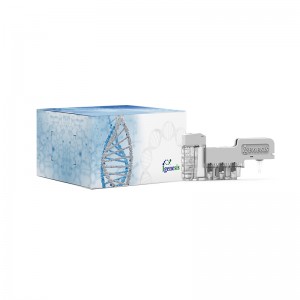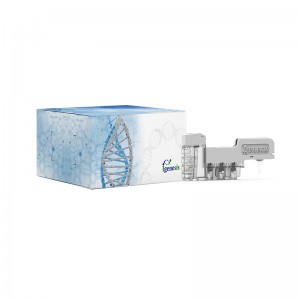SARS-2-CoV(Covid-19)/Influenza A Virus/Influenza B Virus/Respiratory Syncytial Virus Diagnostic Kit (PCR-Fluorescence)
Brief
The Influenza viruses include three types, A, B, and C which are pathogens that cause influenza. Among them, the influenza A virus is most likely to cause epidemic outbreaks. Because the influenza A viruses are prone to large-scale genetic mutations, it may increase infectivity and pathogenicity. Therefore, it can often cause large-scale and even worldwide periodic influenza epidemics and spread to large areas and caused death. The influenza B viruses often cause local outbreaks of influenza. The susceptible population of influenza virus is mostly the elderly, infants and children. The respiratory syncytial virus is the most common and important pathogen of lower respiratory tract infections in infants and young children. It is easy to cause bronchiolitis and pneumonia, resulting in serious infections and complications, and has a wide spread and high incidence.
The SARS-CoV-2 is an acute respiratory infectious disease. People are generally susceptible. Currently, the patients infected by the SARS-CoV-2 are the main source of infection; asymptomatic infected people can also be an infectious source. Based on the current epidemiological investigation, the incubation period is 1 to 14 days, mostly 3 to 7 days. The main manifestations include fever, fatigue and dry cough. Nasal congestion, runny nose, sore throat, myalgia and diarrhea are found in a few cases. Because it is similar to the symptoms caused by respiratory pathogens such as influenza virus, the initial outbreak of SARS-CoV-2 is often mistaken for influenza virus infection and there have been cases of influenza virus and SARS-CoV-2 infection. Rapid detection is conducive to epidemic monitoring and the development of effective prevention and control measures.
Advantages
● Fully enclosed iCassette
● Preloaded reagent, ready for use
● Minimal hands-on time
● Internal control monitors PCR processes
● No need for freezer storage or transportation
● Comprehensive multiplex panels
Parameters
| Sample Type | Oropharyngeal swab / Nasopharyngeal swab / Sputum |
| Turnaround Time | With in 2 hours for extraction, amplification, and result analysis |
| Test Method | Magnetic beads extraction, purification, and qPCR method |
| 6-Plexes Detection | ORF1ab gene, N gene, influenza A virus M gene, influenza B virus NS gene, respiratory syncytial virus F gene and internal control |
| Sensitivity | LOD 200copies/mL |
| Storage Condition | 2~28 ℃ |
| Specification | 12 reactions/kit |





